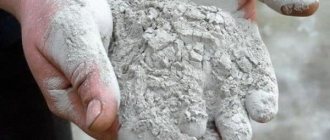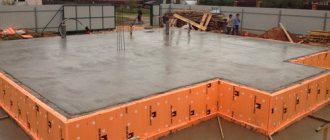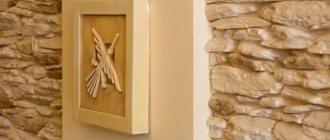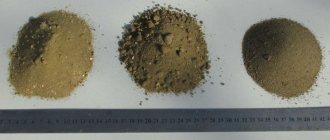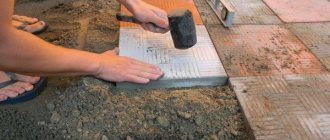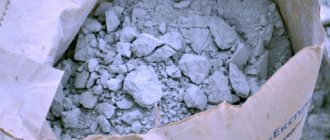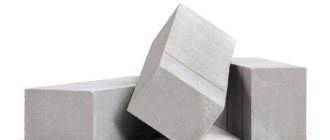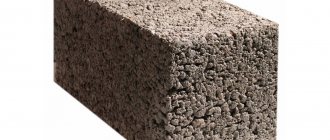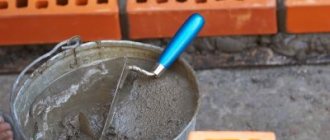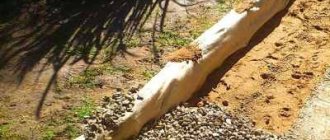In this article we will talk about how to choose cement and which cement is better. We will tell you what types of cement there are, what markings of cement are found.
The construction term “cement” defines a group of artificially created inorganic binding materials, usually hydraulic. The composition of cements and cement mixtures includes special additives (silicate, aluminate, etc.) that determine their performance characteristics. The main criteria for an informed choice of cement are the type, brand and list of work assigned to be performed with its help.
Main types of cement
The question is, “ Which cement is better ?” It’s not at all idle and the answer to it is far from clear. Currently, manufacturers offer the following types of cement:
- Portland cement. The basis of Portland cement consists of gypsum and finely ground clinker, which is a mixture of limestone, marl, clay and blast furnace slag, combined with specific additives. Modern varieties of Portland cement are non-additive, slag and mineral.
- Hydrophobic cement, the main operational characteristic of which is a high degree of water resistance and frost resistance, due to the introduction of a special additive into the cement composition (oleic acid, oxidized petrolatum, synthetic fatty acids, etc.).
- Slag-alkaline, that is, made by mixing finely ground blast furnace slag and activating additives (lime, building gypsum, anhydrite). There are two types of this material: sulfate-slag and lime-slag. The scope of application of slag-alkali cement includes the preparation of cementitious concretes and mortars used in the creation of underground (underwater) structures and autoclave products.
- Fast-hardening cement, characterized by an intensive increase in strength during hardening. The key factors ensuring a high level of mechanical strength are the unique mineral composition, fineness of grinding and precise dosage of added additives. Area of application: prefabricated products and reinforced concrete structures.
- Pozzolanic cement, that is, cement containing over 20% specific mineral additives. The distinctive characteristics of this type of cement are a high degree of corrosion resistance coupled with slow hardening. Used in the production of concrete for underwater and underground construction.
- Expanding cement (including waterproof), characterized by the ability to increase volume during the hardening process. This occurs due to the introduction of calcium hydrosulfoaluminates into the cement composition. The excellent waterproofing characteristics of this cement have led to its use in the construction of hydraulic structures and the manufacture of pressure reinforced concrete pipes.
- Aluminous cement. It is made from finely ground cement clinker, the raw material for which is a burnt mixture of bauxite and limestone. This type of cement is fireproof, resistant to corrosion and quickly gains strength, which makes it successful in creating concrete for various purposes.
- The cement is sulfate resistant. It is characterized by resistance to the negative effects of water containing sulfates, low hardening intensity, low heat generation and frost resistance. It is used in the production of concrete (reinforced concrete) structures and hydraulic structures intended for operation under conditions of sharp temperature fluctuations or in aggressive environments, for example, sulfate (sea) water.
- Tension cement, which is a separate type of expansive cement, consisting of a mixture of Portland cement clinker, lime, aluminous slag and gypsum stone. The hardening process of this cement is accompanied by the creation of pre-stress in reinforced concrete structures, which makes it possible to use it in the manufacture of pressure pipes, the construction of specific thin-walled structures and large containers.
- Well cement, or a mixture of special finely ground clinker with gypsum, is used, as a rule, in the oil and gas industry to create oil (gas) wells of the “hot” and “cold” type.
- Magnesia cement. The active component of this cement is magnesium oxide, produced during the medium-temperature firing of carbonate rocks - magnesite or dolomite. The characteristic features of magnesia cement are:
— increased resistance to chemically aggressive substances (salts, lubricating oils, alkalis, organic solvents, etc.);
— high degree of elasticity;
— low thermal conductivity and resistance to open fire;
— excellent wear resistance and strength;
— compatibility with most organic and inorganic fillers.
The scope of application of this cement includes the construction of seamless (monolithic) floors, the production of abrasive products, thermal insulation materials (magnesite foam, gas magnesite), facing tiles, etc.
As can be seen from the above, the answer to the question “ Which cement is better ?” lies in the plane of a clear definition of the production task intended to be accomplished with its (cement) help.
Which cement is better M400 or M500
Cements of these grades are usually used for the preparation of heavy concrete and cement-sand mortars for various purposes. At the same time, the difference between cements of these brands is that to prepare concrete and mortar based on M500 material, less quantity will be required than M400 material, all other things being equal: compressive strength, frost resistance, moisture resistance, workability and other technical characteristics of concrete and solution.
For clarity of consideration of the question: which cement is better to use for the foundation, we present in Table 1 and Table 2 the proportions of components for the preparation of the most popular brands of heavy concrete used for the construction of 99.9% of the foundations of private low-rise buildings.
Table 1.
| Concrete grade | Component proportions: C:P:SH:V | Consumption of components per 1 m3 of concrete, kg | |||
| Cement M400 | Sand | Crushed stone | Water | ||
| M150 | 1:3,4:5,4:0,9 | 214 | 735 | 1139 | 190 |
| M200 | 1:2,8:4,4:0,7 | 255 | 715 | 1127 | |
| M250 | 1:2,3:3,9:0,6 | 295 | 690 | 1116 | |
| M300 | 1:2:3,3:0,6 | 337 | 670 | 1105 | |
Table 2.
| Concrete grade | Component proportions: C:P:SH:V | Consumption of components per 1 m3 of concrete, kg | |||
| Cement M500 | Sand | Crushed stone | Water | ||
| M150 | 1:3,9:6:1 | 190 | 754 | 1138 | 190 |
| M200 | 1:3,3:5:0,8 | 224 | 738 | 1127 | |
| M250 | 1:2,8:4,3:0,7 | 257 | 722 | 1115 | |
| M300 | 1:2,4:3,8:0,7 | 291 | 706 | 1105 | |
The tabular data clearly demonstrates the difference in the quantities of M400 and M500 cement required for the preparation of concrete of the same grades, having the same technical characteristics and consumer qualities. All! There is no other difference between M400 and M500 cements!
There is another common question: Which cement is better, D0 or D20? Which cement is better? With 20% additives or without additives?
Let's decipher: in the production of cement intended for the preparation of concrete (mortar) with special properties (workability, plasticity, water resistance, frost resistance, quick setting, etc.), certain additives are introduced into its composition, in one percentage or another.
In our case, the cement contains 20% additives. Therefore, cement without additives (D0) and cement with additives (D20) should be considered in the context of the specific operating conditions of the structures for the construction of which it will be used.
The above arguments remove the problem of choosing between M400 and M500 cement. Nevertheless, in order to reassure developers who are puzzling over the problems: which cement is better for laying bricks, which cement is better for tiles, and which cement is better for plastering walls, by analogy with popular brands of concrete, we present in Tables 3 and 4 the proportions of cement-sand mortars used for masonry, installation of tiles and plaster.
Table 3.
| Brand of solution | Solution proportions: C:P:V | Consumption of components per 1 m3 of solution, kg | ||
| CementM400 | Sand | Water | ||
| M50 | 1:6,5:1,3 | 225 | 1430 | 285 |
| M75 | 1:5:1 | 285 | 1390 | |
| M100 | 1:4:0,8 | 338 | 1348 | |
| M150 | 1:2,9:0,6 | 450 | 1265 | |
| M200 | 1:2:0,5 | 560 | 1185 | |
Table 4.
| Brand of solution | Solution proportions: C:P:V | Consumption of components per 1 m3 of solution, kg | ||
| CementM500 | Sand | Water | ||
| M50 | 1:7:1,4 | 210 | 1443 | 285 |
| M75 | 1:5,5:1,1 | 259 | 1408 | |
| M100 | 1:4,5:1 | 305 | 1373 | |
| M150 | 1:3,3:0,7 | 400 | 1302 | |
| M200 | 1:3,3:0,7 | 400 | 1302 | |
Cement marking
To determine the composition and performance characteristics of cement, you must carefully read the container in which it is packaged. As a rule, it is a multilayer paper bag, on one side of which there are markings, data on the composition, percentage of additives and the manufacturer. As an example, consider one of the markings - PC 500-D20, where:
“PC” is an abbreviated name for cement;
«500» — compression ratio;
“D20” is the ratio of additives to the clinker base in percentage.
TOP cement M500
When choosing which cement is best for the foundation, you should definitely pay attention to this brand. It is characterized by high strength and is suitable for floors that bear loads, for laying load-bearing walls and for pouring the foundation for a building.
Eurocement 500 Super
This product has many positive reviews, and cement is often used in the construction of houses. It is recommended to use for pouring foundations, building walls, screeds. Specialists often buy it because of its quality, the mixture meets GOST standards, the solution sets quickly, which helps reduce the time of the main process. In addition, the consumer receives protection from moisture and frost.
pros:
- High quality composition.
- Strength.
- Durability of the poured solution.
- Fast drying.
- Wide scope of use.
There are no downsides to this brand.
Holcim Tared 50kg CEM II/AK(SH-I) Class 42.5N
This option is considered one of the best for pouring a foundation for a house, since the solution can withstand heavy loads. This allows the mixture to be used for buildings of 2-3 or more floors. Hardening is optimal, the dry mixture includes minerals, eliminating the appearance of cracks or peeling. The product is sold in 50 kg bags, which is convenient during construction.
Pros:
- Ideal for load-bearing structures due to its strength.
- Can be used indoors and outdoors.
- The maximum bending strength is 78 kg/cm2.
- Includes mineral and plastic substances.
- Withstands loads within 433 kg/cm2.
- Does not have a blue tint, the color is gray.
- Affordable price within 300 rubles per bag.
- Excellent adhesion.
- Optimal hardening time, which helps remove defects in the form of smudges or sagging.
Minuses:
- If you work in the cold, setting may occur with the formation of small voids.
- It is inconvenient to grasp the carrying bag.
EuroCement 500 Extra D20 CEM II
The product is characterized by optimal drying speed and durability. After preparing the solution, it is convenient to pour it into voids and level the surface. The mixture is not afraid of frost, so it can be used even in winter. The quality is at a high level, but at temperatures below +10 degrees, hardening will be slow.
pros:
- Excellent quality.
- Easy to use.
- Long storage period.
- No cracks appear during shrinkage.
Minuses:
- High price.
- If the temperature is low, the hardening process will be slow.
Stone flower M500 D20
This is the best option for laying bricks, foundations and other important work. Cement is characterized by a high degree of strength, which is 500 kg/cm2. The composition contains polymers to accelerate hardening and eliminate cracks when drying. To increase adhesion, the manufacturer adds glue and other elements, which also make the solution insensitive to weather. Sold in packages of 40 and 50 kg.
Pros:
- Optimal hardening time, which is suitable for mixing the solution, laying it with further leveling.
- The solution is easily prepared using technology or manually.
- Affordable price.
- Availability of mineral supplements.
- Suitable for exterior or interior use.
- High strength.
- Ecological cleanliness.
- Meets GOST.
- Resistance to frost and moisture.
- The ready-made and hardened solution serves for a long time and retains its properties.
- High degree of adhesion to materials.
Minuses:
- Shelf life up to six months.
- The corners of the bags are smooth, so it is inconvenient to carry and take the goods.


